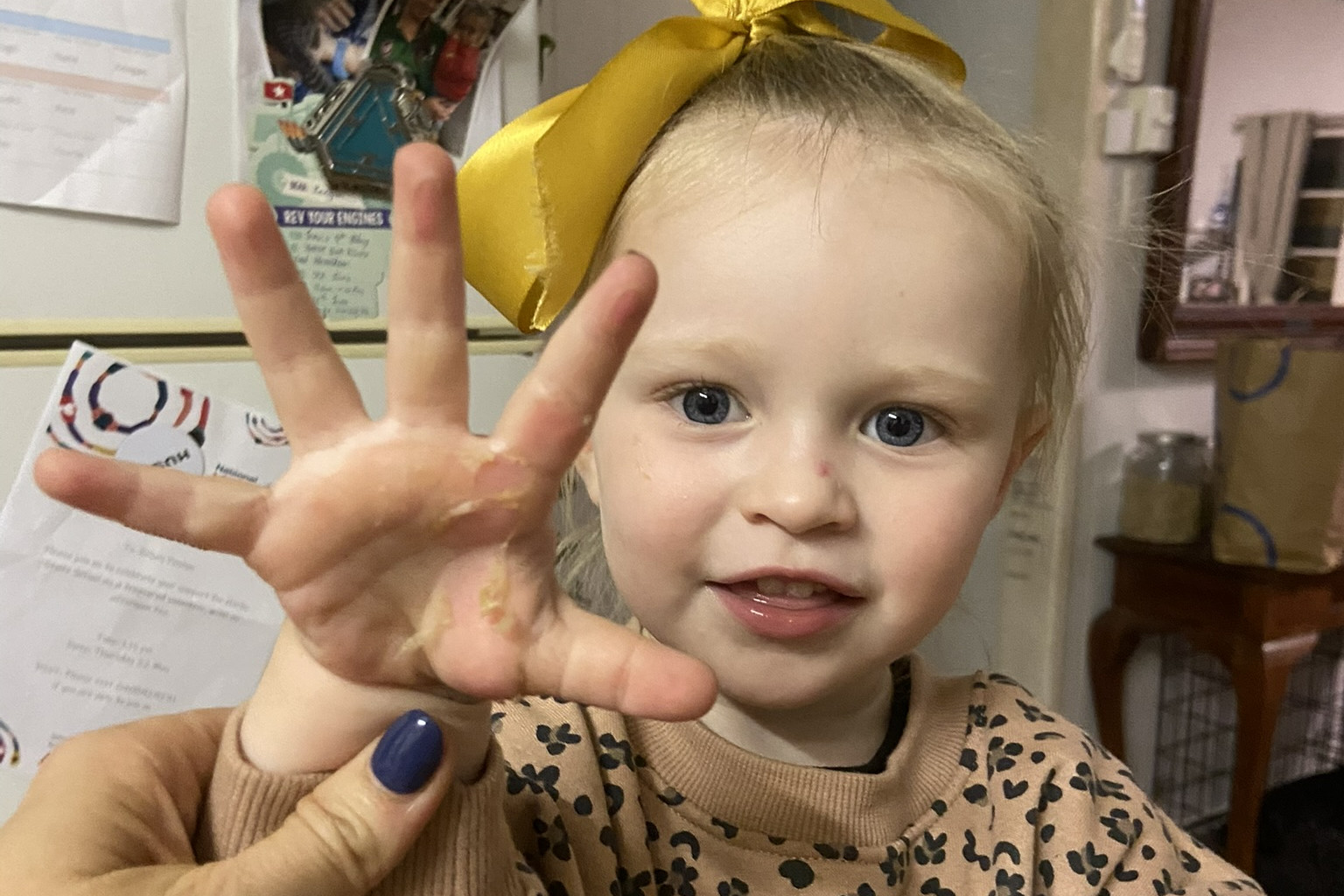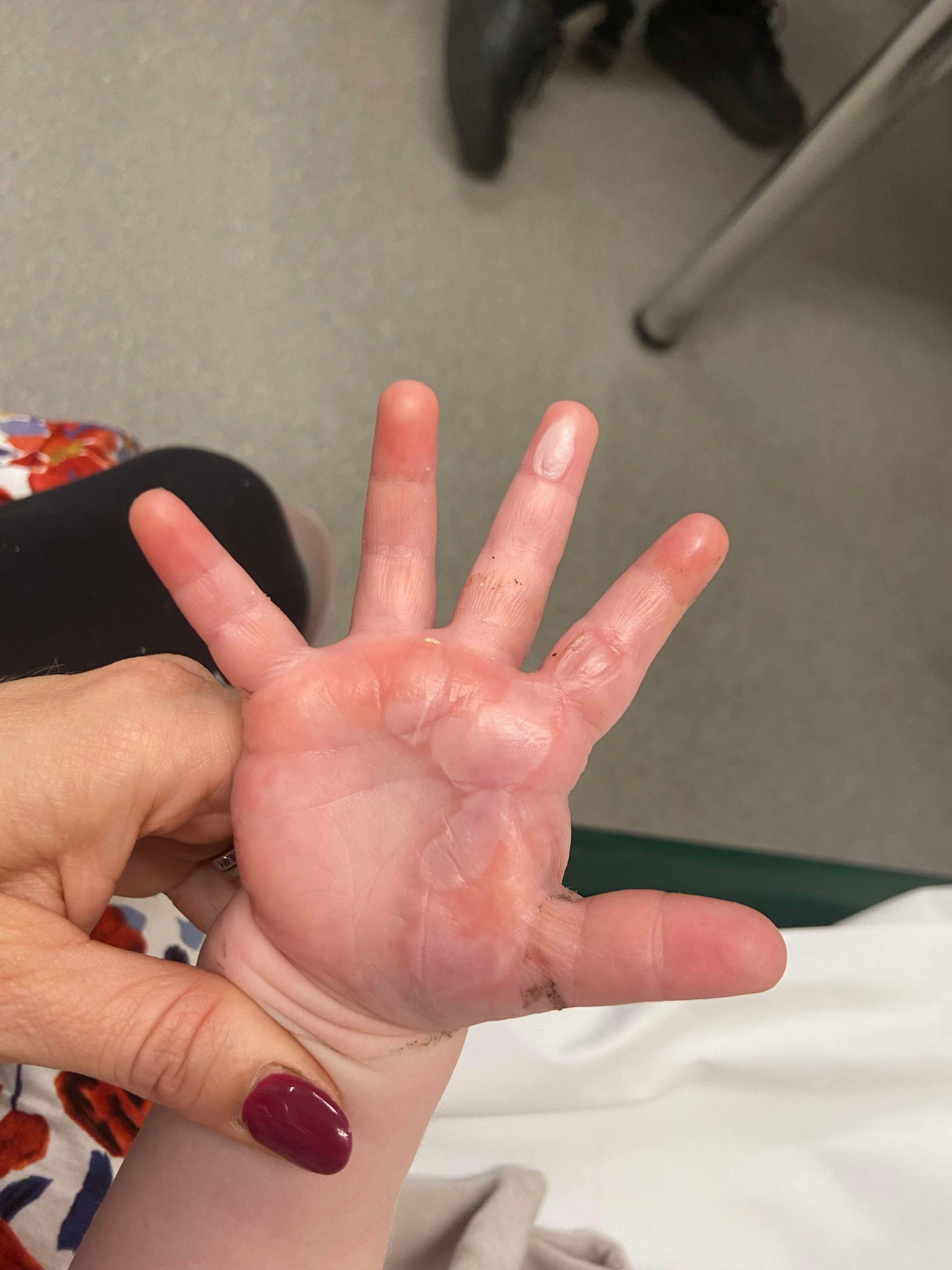News
27 May, 2025
The burning need for more ER doctors
A two-year-old Kilcoy resident allegedly had to wait an hour to be seen by a doctor for a serious burn at the Kilcoy Hospital Emergency Room (ER) on Sunday, May 4, despite claims that on-site doctors would be available on weekends and after hours.

Kelsey Daniels arrived at the Kilcoy ER at 8:30am after her two-year-old daughter, Kinsley, sustained a serious burn on her hand. After an hour of waiting, Ms Daniels was allegedly told a doctor “wasn’t far off” and that was what they were waiting on. According to Ms Daniels, the nurse was also unable to provide any pain relief medication until a doctor arrived, resulting in her husband driving home to get Panadol while they waited.
“I wasn’t aware that we had to wait until the doctor came on in the first instance. It wasn’t until almost 9:30 that she let me know that it was specifically because we were waiting on the doctor,” she said. “I thought that there was somebody in the room ahead of us being seen. The nurse was unable to even provide basic pain medication without a doctor present, which I totally understand, but she was obviously very upset to not be able to give anything to help in terms of pain. She did everything else that she could, but we basically just had to wait for a doctor to come.”
Ms Daniels added that once a doctor arrived, they were “all over it” and seen very quickly, but said “it was a surprise” to have to wait for a doctor at all. “We probably would have gone to an Urgent Care Clinic if I’d have been aware of that,” she said.
This comes after Metro North Hospital told The Sentinel in April it had “seen the addition of a locum doctor to the hospital’s workforce” in response to a shortage of on-site doctors after hours and on weekends. According to a spokesperson for Metro North Hospital, “there continues to be medical coverage at Kilcoy Hospital, 24 hours a day, seven days a week,” with this medical coverage being delivered using a virtual doctor service, supported by highly trained nursing staff.
According to Ms Daniels, she was allegedly told by a nurse a few weeks prior to her daughter’s ER visit that the availability of doctors at the hospital had actually not improved, despite Metro North’s claims. Ms Daniels said she experienced this first-hand when her daughter burned her hand.
Ms Daniels acknowledged the pressure this has put on the nurses and the “bad rep” they sometimes get online, even though they are doing the best they can within their scope of duty. “I just think they caught the hard end of the stick,” she said. “Every time we’ve been there, they have done everything that they possibly can and I know that there are going to be bad experiences from time to time, but we’ve personally never had one that is within their control. I just think it really lets them down that they can’t do their best for their community.”
Ms Daniels added she is now worried about what would happen in the case of a real emergency after hours and would likely go to another clinic or hospital in the future.
A Metro North Health spokesperson said a doctor was in residence at the hospital on that Sunday. “As is regular practice, doctors allocate their time across the hospital, including the Emergency Department, based on critical patient needs,” they said. “We can confirm a recruitment process is currently underway to add new medical staff to the pool of doctors at Kilcoy Hospital. Arrangements are in place for Kilcoy Hospital to ensure medical staff are available 24 hours a day, 7 days a week. In emergent situations where a doctor is not available onsite, patients have access to a doctor through a virtual doctor service, supported by highly trained nursing staff. Like other rural hospitals in Queensland, Kilcoy Hospital is impacted by sector-wide workforce shortages. Metro North Health will continue our efforts to recruit more doctors. Metro North Health is committed to providing high quality healthcare at all of our facilities, including Kilcoy Hospital.”
State Member for Nanango, Deb Frecklington, said the State Government remains “committed to exploring initiatives” to attract and retain healthcare workers in rural areas. “Kilcoy Hospital continues its active recruitment efforts to address the ongoing shortage of medical staff, a challenge faced by many rural communities across Queensland,” she said. “I would like to extend my sincere thanks to the dedicated doctors, nurses, and support staff at Kilcoy Hospital. Your unwavering commitment to providing quality care under challenging circumstances is appreciated by the entire community. As the Member for Nanango, I will continue to advocate for the residents of Kilcoy and surrounding areas.”
Queensland Labor Leader Steven Miles, who had advocated for more on-site doctors at Kilcoy Hospital in March and celebrated the announcement of a locum doctor in April, said the State Government “should listen to the experts, the staff and the community – and provide them with the health services they need”. “David Crisafulli said he would listen to the experts. He said there would be no health cuts,” he said. “But when the Kilcoy community needed doctors and nurses, the State cut incentives to attract frontline healthcare workers. They cut after-hours and on-weekends staffing for doctors. It was only after we put pressure on this government did they reverse that decision.”
Recently retired Kilcoy GP of 45 years and a founding Fellow of the Australian College of Rural and Remote Medicine (ACRRM), Dr Tom Doolan, called the lack of doctors at the hospital “unacceptable”, especially as Kilcoy is dealing with a growing population of 20,000 to 25,000 people in or driving through the area during holiday seasons. “The interest of our community has been ignored. Our hospital ward has now become a rehabilitation centre for metropolitan patients,” he said. “We have been cannibalised by other hospitals with the interests of our community and our patients obviously nowhere near as important as metropolitan people.”
According to Dr Doolan, there are three main obstacles to acquiring medical staff for rural communities:
Lack of proper training for all doctors to know how to work in rural clinics and hospitals;
Lack of adequate remuneration to encourage doctors to make the move;
Lack of appropriate service models, which need to be a collaboration between the public and private sector.
“They keep saying there are not enough doctors to come out here, but we had two positions open in our practice and we had 23 applications for those two positions,” he said. “The interest is there, but what we are dealing with is a failed and very dangerous service model.”
Recently announced federal investments in the 2025–26 budget to train more GPs and nurses over four years include:
$204.8 million for salary incentives for junior doctors to specialise in general practice;
$43.9 million to provide paid parental leave and study leave for trainee GPs;
$44.0 million for an extra 200 rotations for junior doctors in primary health care per year from 2026, increasing to an extra 400 per year from 2028;
$10.5 million for 400 scholarships for nurses and midwives to extend their skills.
The Federal Government is also partnering with state and territory governments on Single Employer Model (SEM) trials aimed at attracting more junior doctors to consider a career in general practice, particularly in regional and rural areas. SEM trials support GP and rural generalist trainees to continue to access their leave and salary entitlements accrued during their prevocational training, by allowing the State to continue as their employer throughout vocational GP training.
Federal Member for Blair, Shayne Neumann, said Federal Government initiatives had seen more doctors join the health system than at any time in the past decade. “More doctors are registering to practise in Australia, more junior doctors are training to become GPs, and more medical graduates are aspiring to become GPs since our Government’s record investments to strengthen Medicare,” he said. “We will deliver more doctors and nurses into Medicare, with 400 nursing scholarships and the country’s largest GP training program ever, funding the training of 2000 new GP trainees a year by 2028. The Government will strengthen Medicare with a $617 million investment to train more homegrown doctors and nurses. This forms part of our record $8.5 billion strengthening Medicare investment.”
Mr Neumann also added the Federal Government is considering the findings of the Working Better for Medicare Review, which examined how existing policies attract and distribute the health workforce, including for regional, rural and remote areas.


